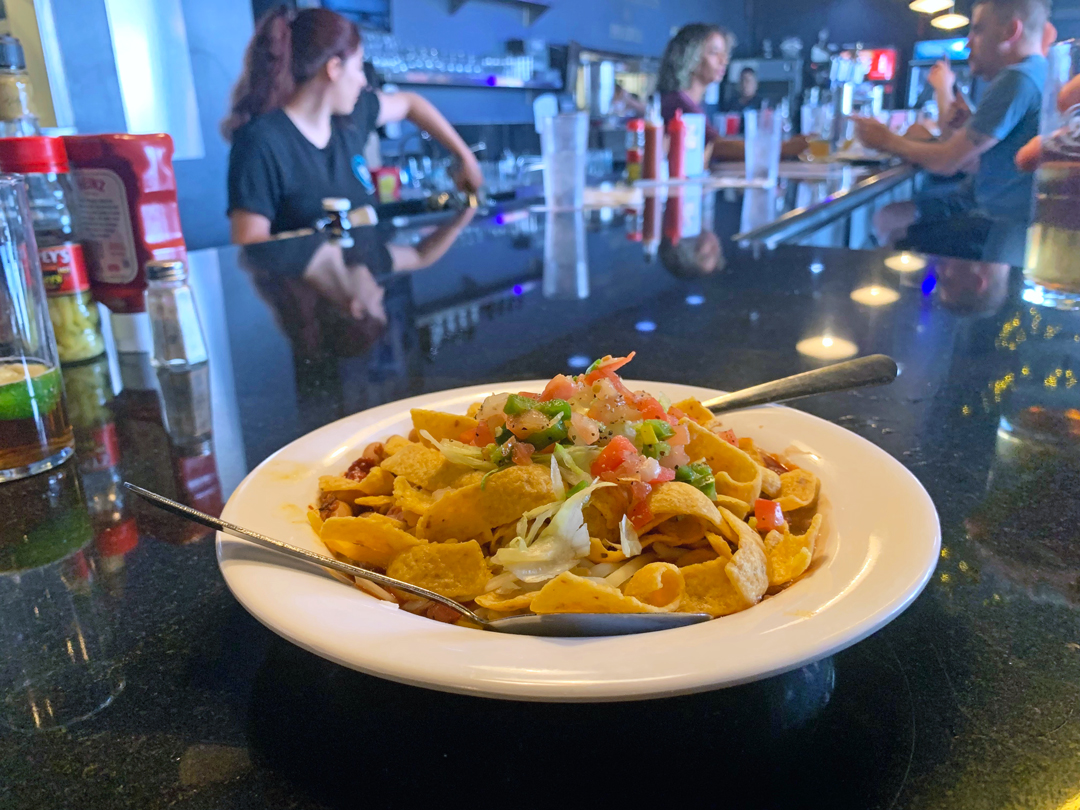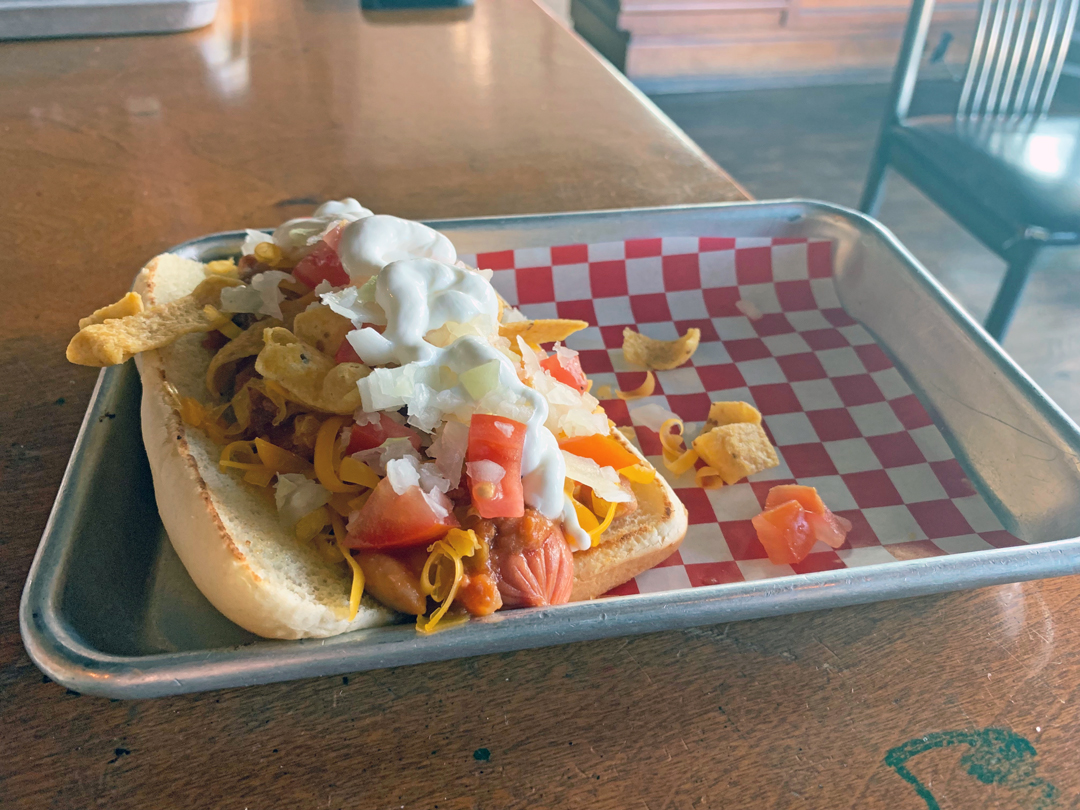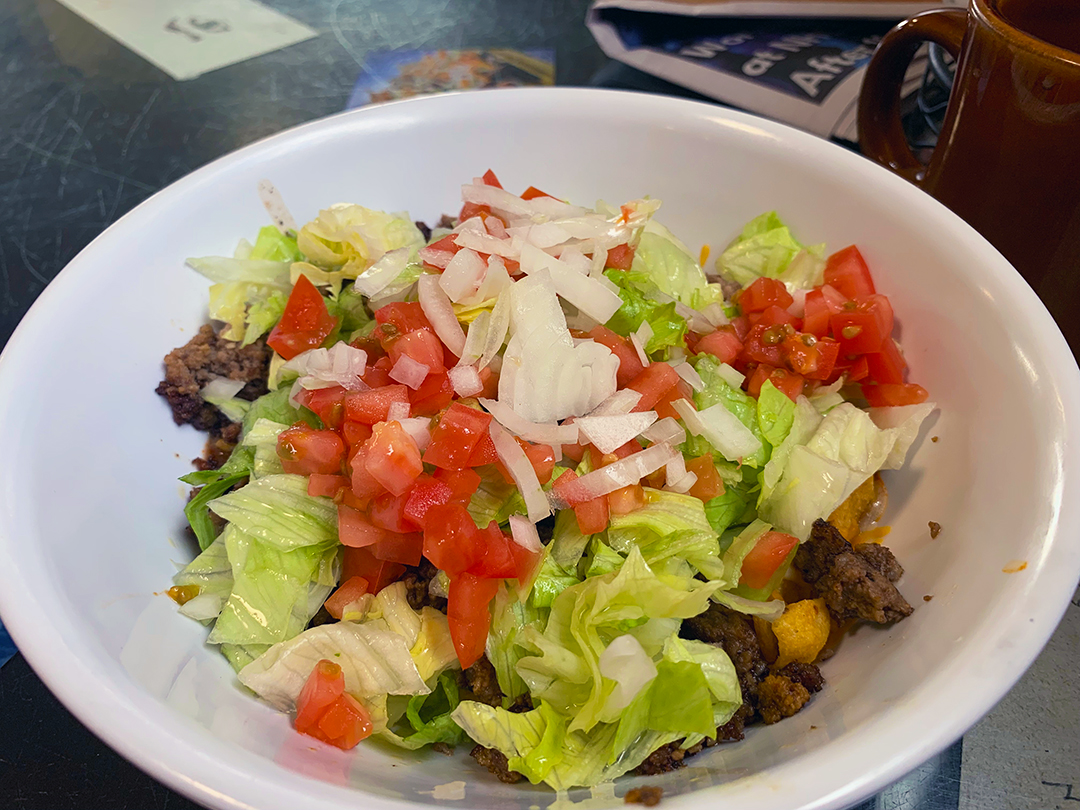
Who invented the pancake? Or the stew? Or, I dunno, steaks? Most foods originated in the long ago and resist easy attribution to an individual, but once upon a time, somebody must have been the first to put a pot full of water, meat, and beans over the fire and call it dinner.
The similarly simple Frito pie is surprisingly (and famously) controversial, with the classic concoction of meat, chile (or chili, depending on the regional variety), cheese, beans, and, of course, Fritos, claimed by at least two possible points of origin: New Mexico and Texas. Yep, that gives these age-old competitors one more thing to bicker about, with the tug-of-war coming to national consciousness about ten years ago when dearly departed critic Anthony Bourdain cut through the Gordian knot of interstate rhetoric and declared that New Mexico should let Texas have it because all versions were nothing more than a “warm bag of crap” anyway. He was wrong about that, and he later apologized, though many in both states still haven’t gotten over it.
Although I’m a stalwart New Mexico partisan, even I have to admit that Texas seems to have the better claim. After all, the Frito itself was invented in 1930s San Antonio by Gustavo Olguin—who then sold the recipe to C. E. Doolin, who modified it, claimed it as his own, trademarked it, and mass marketed it into the ubiquitous gas station snack we all know today. The first time the words Frito pie appeared together in print was in 1946, when the Electra News of Wichita County, Texas, reported that Mrs. E. R. Graham presented the recipe at the Electra Home Demonstration Committee, right after Mrs. Flora Stockton taught everyone how to can chicken (what a wild night that must have been!). Sadly for my state pride, it wasn’t until the 1960s that Teresa Hernández of the famous Santa Fe Plaza Woolworths began selling her version, packaged sweetly in a slitted Frito bag.
But come on, do we really need to identify the Escoffier of this simple dish? The people of Oaxaca were making corn tortillas for at least two thousand years before the conquistadors showed up in Tenochtitlan, Spanish colonists from Tlaxcala to Santa Fe were frying them into tostadas by the 1800s, and surely everybody was pouring some variety of beans, meat, and sundry over them at all evolutionary waypoints. The ingredients and combinations were all there, in other words, and by the time mass-marketed Fritos (distinct from corn tortilla chips due to their purported lack of nixtamalization, resulting in a coarser, more corn-y chip) entered the scene, somebody, whether Mrs. Graham or otherwise, was going to decorate them with whatever was close at hand, and, perhaps, call it a pie.
So let’s put aside the mythology of their creation and focus on what really matters: where we can find the best ones and stuff our faces with them.
Santa Fe’s Five and Dime still sells the Hernández version, but Burqueños have a considerable stake in the Frito pie scene as well. Here are some of my favorites from the Middle Rio Grande Valley.
Duran Central Pharmacy
This classic eatery is as traditional as it gets, even by the standards of Old Town Albuquerque. Founded in 1942 as a, you guessed it, pharmacy, the old soda fountain was converted to a diner in the late 1960s, serving up a delicious array of New Mexican comfort food. In the fifty-something years since, many things have changed, including the address, but the place stays true to its roots, even continuing to function as a pharmacy, so it’s no surprise that the diner’s Frito pie sets the gold standard for the ultimate New Mexican example. It’s more of a thick stew than a pie, but I ain’t complaining. Red or green is equally excellent, but for something truly special, ask for carne adovada.
Nexus Brewery
It may not be much to look at from the outside, sandwiched between a windows and doors outlet and a luxury dog kennel, but inside Nexus Brewery you’ll find a comfortable dining space and an array of excellent beer to choose from. One of New Mexico’s only Black-owned breweries, Nexus’s distinct take on “New Mexico soul food” gives their Frito pie a gourmet feel, especially if you bypass the usual options of chicken or beef and go with pulled pork instead. This addition imparts a rich, smoky flavor (and is amazing with the red chile) and will send you into a state of hedonistic bliss, especially when paired with a house-brewed beer: may I suggest the cold-lagered Frio IPA?
Clowndog Hot Dog Parlor
This circus-themed Nob Hill restaurant offers a traditional Frito pie, but if you’re at a place called Clowndog you should probably try the Frito dog, right? Admittedly, my dog’s bun had some trouble holding all the ingredients in place, but that’s why you’ll be happy it comes with silverware. The beef and bean chili is tangy and offers a touch of picante—either version of the pie is more Texas than New Mexico—and you’ll likely consider ordering a second dog once you’re done.
Tia Betty Blue’s
Located in a remodeled two-story house on the edge of Albuquerque’s International District, Tia B’s is the definition of funky and is known across the city for the high quality of their red chile (ground from pods, of course, not powder). So it’s no surprise that the addition of this magical ingredient elevates their Frito pie above its lunch-counter roots. You can also ask for an egg on top, although given the size of the thing, that may be more than any mere mortal can handle.
There are dozens more places to get your Frito pie fix in Albuquerque alone, of course, and an uncountable number to try in the rest of the state. These are my personal favorites, but the important thing is to get out there and explore the Frito-scape for yourself. In other words, don’t waste another thought on the minutiae of its origin. Instead, celebrate this homey, delicious dish that, no question, New Mexico has made its own.

Ty Bannerman
Ty Bannerman has been writing about New Mexico for over a decade. He is the author of the history book Forgotten Albuquerque and his work has appeared in New Mexico Magazine, Atlas Obscura, Eater, and the American Literary Review. He co-hosts the podcast City on the Edge, which tells stories from New Mexico’s past.











